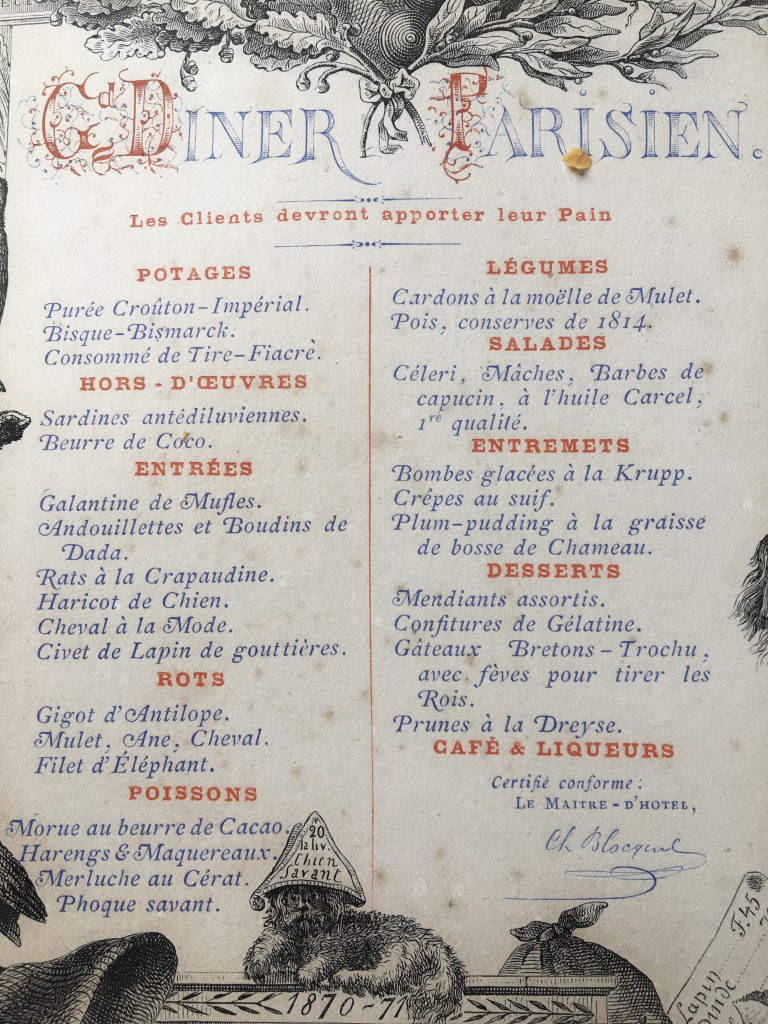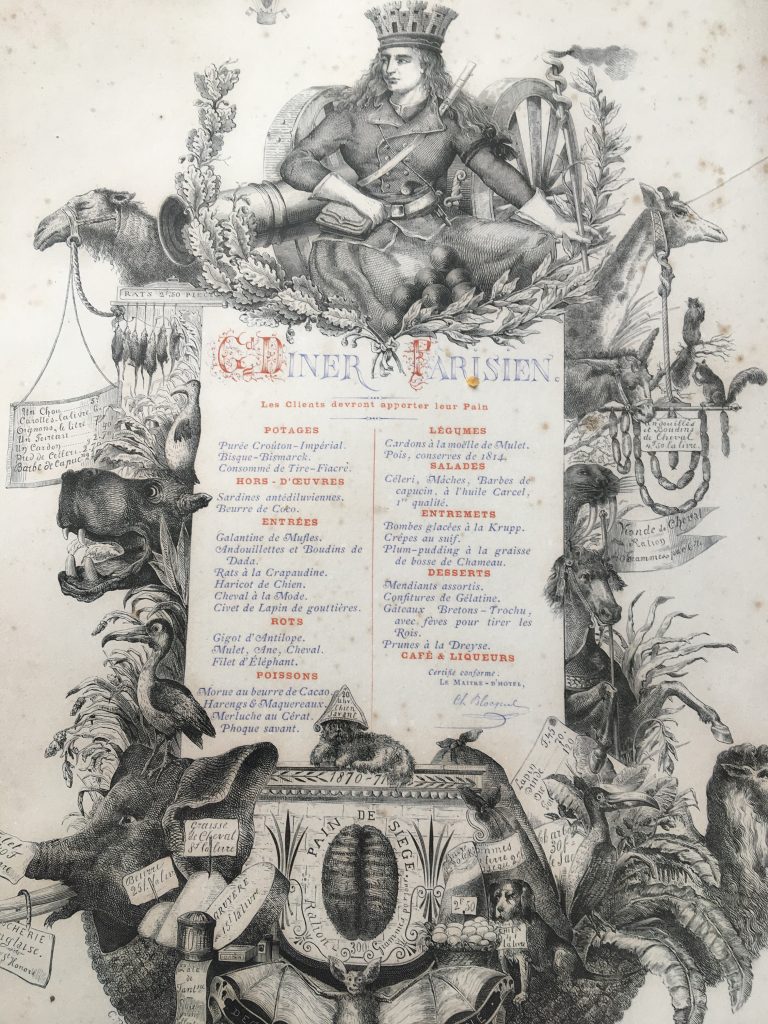Paris 1905. My grandmother’s parents owned a grocery store near the Porte Saint Martin in the 10th arrondissement. She is the girl in the middle.

The adults on this photo lived through the Prussian siege of Paris in the winter of 1871.
A restaurant menu mentioning cats and rats hung next to the piano in my grandparents’ sitting room.


DÎNER DE SIÈGE – PARIS 1871
The French like a witticism. This ‘Dîner Parisien’ menu is an example of the food on offer during the 1871 siege. Badly managed by President Thiers, the aftermath of the siege led to the Commune uprising in spring. You will read about the siege in the first book of my upcoming trilogy, The Sand Vines.
DÎNER PARISIEN
Bisque – Bismarck. A snub to the German chancellor.
Consommé de Tire-Fiacre. Cab-puller broth. (There were 80 000 horses in Paris at the start of the Prussian War.)
Andouillette de dada. ‘Dada’ (gigi) is the baby word for horse.
Rats à la crapaudine. Flattened (like toads,) rats were skewered and sold as kebabs.
Haricot de chien. Unable to feed their dogs, Parisians had to eat them.
Civet de Lapin de gouttières. Gutter rabbit… T’was often said one could not tell rabbit from cat.
Phoque savant. Trained seal from the Paris Zoo.
Plum-pudding à la graisse de bosse de Chameau. Fat from the camels’ hump was used for this plum-pudding. Since there was no butter, cocoa butter, donkey and horse-fat took its palce. Mixed with sugar, (sugar and alcohol never ran out) this suet was the basis of all desserts.
Bombes glacées à la Krupp. A reference to the German industrialist.
Mendiants assortis. ‘Beggars’ are a dessert made from left over brioche.
Gateau Breton – Trochu avec fèves pour tirer les rois. A complicated allusion to the fall of Napoleon III and the weak General Trochu, who took over from him.
